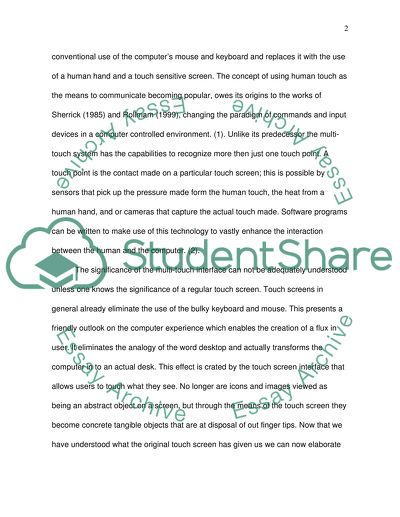Cite this document
(Jeff Han Multi-Touch Sensor and Its Applications Case Study, n.d.)
Jeff Han Multi-Touch Sensor and Its Applications Case Study. Retrieved from https://studentshare.org/technology/1547078-technology-jeff-hans-multi-touch-sensor-applications-protaining-to-this-new-software
Jeff Han Multi-Touch Sensor and Its Applications Case Study. Retrieved from https://studentshare.org/technology/1547078-technology-jeff-hans-multi-touch-sensor-applications-protaining-to-this-new-software
(Jeff Han Multi-Touch Sensor and Its Applications Case Study)
Jeff Han Multi-Touch Sensor and Its Applications Case Study. https://studentshare.org/technology/1547078-technology-jeff-hans-multi-touch-sensor-applications-protaining-to-this-new-software.
Jeff Han Multi-Touch Sensor and Its Applications Case Study. https://studentshare.org/technology/1547078-technology-jeff-hans-multi-touch-sensor-applications-protaining-to-this-new-software.
“Jeff Han Multi-Touch Sensor and Its Applications Case Study”, n.d. https://studentshare.org/technology/1547078-technology-jeff-hans-multi-touch-sensor-applications-protaining-to-this-new-software.


